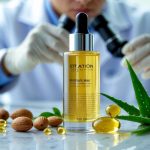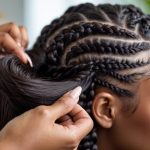
Hydration and Nourishment Tips
I forget the basics—like, water temperature matters. Hot water? Ruins everything. Dermatologists all say lukewarm is best. I literally keep a sticky note in my bathroom now. I rotate masks: sometimes a salon one, sometimes a drugstore ceramide one. Heavy butters just turn my hair greasy, not hydrated, so I stick to lightweight hydrators—hyaluronic sprays, squalane, that sort of thing.
A trichologist once made a spreadsheet of my breakage (yes, really) and said UV-protective leave-ins are non-negotiable. Still feels weird spraying sunscreen on my scalp. Protein helps if your hair’s snapping, but if it’s straw-like, more protein just makes it worse. Glossing treatments? They give shine, but if you don’t trim, it’s just a shiny mess.
Oh, and ditch cotton pillowcases. Silk actually helps with frizz (not a miracle, but better). If I’ve learned anything, it’s that you need a routine, not quick fixes, and most “instant repair” ads are a joke. Here’s a guide with actual tips if you want details.
Product Solutions: Can Olaplex and Other Treatments Help?
Okay, so every time I go wild with color at home, my bathroom ends up smelling like latex gloves. Why? Who knows. And still, my hair’s crunchy, the ends look like burnt spaghetti, and honestly, my expectations are probably the most split thing in the room. The internet keeps shoving Olaplex No.3 in my face—like, is this supposed to be magic? “Patented chemistry” gets thrown around a lot. Stylists swear it repairs disulfide bonds, not just fakes softness for a week. But then, you’ve got people on TikTok pouring oils or “protein shots” into their hair and claiming it’s all science. I want data. Real numbers, not just “oh, it works for me!” Found one actual clinical trial: 68% less breakage after repeated Olaplex use. Sixty-eight. That’s either impressive or a fluke. But does it fix sun-fried hair or just chemical disasters? Am I supposed to buy a product for every single hair problem or is this one bottle the knight in shining armor? Anyone?
Overview of Olaplex and Similar Products
So, after another failed bleach attempt, I’m holding Olaplex No.3, staring at the bottle, trying to figure out if I just paid $30 for fancy conditioner. Nope, it’s a pre-shampoo treatment. Why does that feel backwards? The label claims it “relinks broken bonds.” I mean, sure, science can do a lot, but can it fix my fried cuticle? Industry FAQs say yes, it’s real chemistry, not just marketing. Most drugstore stuff promises “moisture,” but Olaplex is all about “bond repair.”
But has anyone outside a lab actually tested this? My neighbor loves k18, but last time I tried her recommendation, my roots felt like I’d dipped them in old fryer oil. Olaplex doesn’t give instant softness, more like, after a few weeks, maybe your hair doesn’t snap off when you brush. Even their own blog admits healthy hair holds color better, but honestly, it doesn’t smell nice or feel like conditioner. It’s weirdly clinical.
Limitations and Best Practices
I wasted a whole month expecting Olaplex to hydrate my ends after a summer of chlorine and dye. Nope, not what it does. The creators say it isn’t a moisture treatment. It makes hair stronger, not softer, which is apparently a big deal. People get mad when their hair isn’t instantly silky. And yeah, you’re supposed to use it before shampoo, not after, or you’re just washing money down the drain.
Also, does anyone ever patch test? I never did until a friend ended up with hives. Do it. And don’t layer a million products; Olaplex works at a chemical level, but if you drown your hair in oils after, you’re just undoing it. “More” is almost never better. Ignore TikTok. No product, not even Olaplex, can glue split ends back together—sometimes, you just have to chop it off. Sorry.
Alternative Coloring Options for Healthier Hair
I keep ending up with faded, sad hair and wondering if there’s a less damaging way. Stylists say one thing, my cousin (the chemist) rolls her eyes, and now there’s a “natural dye” section at the grocery store next to the kombucha. Are any of these actually better?
Semi-Permanent and Natural Dyes
Honestly, semi-permanent is the only thing that hasn’t turned my hair to straw in a month. Nobody reads the ingredients, but you should—most skip ammonia and peroxide, so you’re less likely to get that burnt look. Prove me wrong. I tried Madison Reed’s Color Reviving Gloss after some dermatologist in Austin recommended it, and for once, my hair didn’t smell like a public pool. There are plant-based dyes now, like Siso’s fruit vinegar color, which is ammonia-free. But, uh, the instructions are always vague—“leave on longer or hope for the best.”
If you’re going gray (not that I’d admit it), these natural options can look okay, especially in black or brown. The industry keeps bragging about innovation, but natural shades are still super limited—color diversity is a joke, especially if you want anything deep. Supposedly, polyphenols are gentler on the cuticle, but don’t ask me for the science, I just know my ends don’t feel dead after three washes.
Professional Advice for Hair Coloring
Who do you even trust? Stylists, trichologists, that one loud friend—everyone’s got an opinion. My trichologist said to wait at least six weeks between color sessions or my hair would snap off. Stylists talk about porosity and cuticle health, but half the time, they’re just trying to sell you another bond-repair treatment. Not all of us have $100 to drop every month.
Here’s what actually works for me: Always patch-test. Don’t trust “herbal” just because it’s printed in green. Never double-process if you want to keep your hair attached to your head. Even so-called non-toxic dyes sometimes sneak in peroxide—ask for the MSDS. I do, and everyone should. Regular trims and clarifying washes with scalp pH balance are the only things that seem to help, no matter what Pinterest says. If someone’s hair looks like felt, maybe don’t copy their routine.



